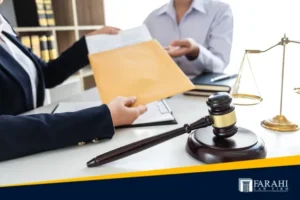
Who is to Blame in Self-Driving Car Accidents?
More and more driverless vehicles are hitting the streets. In fact, ABI Research, a market foresight advisory firm that specializes in transformative technologies, predicts the production of 8 million autonomous vehicles (AVs) by 2025.
From the numbers alone, we can conclude that automotive innovation has no sign of stopping anytime soon. However, it does beg the question – who is to blame for autonomous driving car crashes?
Self-driving cars – what are they?
Before addressing the question, it is essential to understand what autonomous cars are. One might say that calling them “autonomous” or “self-driving” is enough, this is incorrect and just going by that definition carries risk on its own.

Contact us Today For Free Case Evaluation
Not all AVs are created equal. The current so-called self-driving cars on the road still need human intervention. Meaning we aren’t still at a point where a car can take us wherever we want without any intervention on our part.
For a better understanding of what makes a car autonomous, the Society of Automotive Engineers (SAE), a US-based, globally active professional association and standards developing organization for engineering professionals, categorized driving automation into 6 levels.
Information from www.synopsys.com/automotive/autonomous-driving-levels.html
Self-driving car accidents by the numbers
Given that the majority of vehicular collisions are caused by human error, self-driving cars were created to mitigate just that. Their smart technologies are believed to help reduce the number of car accidents by a significant amount. However, reality shows that autonomous vehicles (AVs) have not and will not be able to eradicate car collisions and other vehicular accidents anytime soon.
In 2016, a Google driverless car running on self-driving mode at 2mph collided with a bus. Not long after, a collision involving an Uber autonomous car resulted in the death of the pedestrian. Recently, two men died after a Tesla vehicle on self-driving mode with no one at the wheel crashed into a tree in Houston, Texas. Despite these incidents, autonomous vehicle technology is still seen as a viable way to take human error out of the equation and reduce road accidents.
A report from the RAND Corporation showed that “more lives are cumulatively saved” as autonomous vehicles become available for the consumer since they are “10 percent better than that of the average human driver.” It goes on to say that the “savings can be significant – hundreds of thousands of lives.”
Who is to blame in a self-driving car collision?
Now comes the tricky part. Who should be held responsible when AVs are involved in self-driven car collisions? This is a liability conundrum especially since there is a third party involved – the AV manufacturer.
With software codes and hardware thrown into the mix, determining who is at fault may not exactly be a walk in the park. American news website Vox discussed and wrote an article on how the liability question played out in several cases where self-driving vehicles were involved in fatal car collisions.
In the 2018 Uber AV accident, the company settled with the victim’s family. This settlement was made despite a federal report exonerating the transport firm to some degree since the self-driving Uber SUV was not designed to recognize jaywalking pedestrians. The victim in the incident had been walking with a bicycle across a badly lit stretch of a multi-lane road.
In another fatal case this time involving a Tesla, the family of the victim did not blame the driver or the company despite a federal report that found Tesla’s Autopilot to be partially at fault.
So, who is to blame? In most cases, it still is the driver or the lack thereof. This is because self-driving vehicles that have been released to the consumer are still at level 2 or at the very early stages of level 3 automation.
In other words, the so-called autonomous vehicles currently on the street are not fully autonomous. Human intervention is still needed to avert potentially fatal accidents while driving an autonomous vehicle.
However, manufacturers are not completely blameless either. Exhaustive research and constant updates must be done to rule out software and/or hardware failure each time a self-driving car is involved in a collision.
Subscribe To Our Weekly Newsletter
No spam, notifications only about new updates on Farahi Law Firm, APC.
If you have been in an accident, contact us!
If you or a loved one are a victim of a personal injury case, it is essential that you hire a lawyer to ensure that you are fairly compensated for any and all damages. Farahi Law Firm, APC, is here for you! We work on a No Win-No Fee basis, so you don’t have to pay us a cent until you get the justice that you deserve. Contact us today at (844) 824-2955 for a free consultation.








